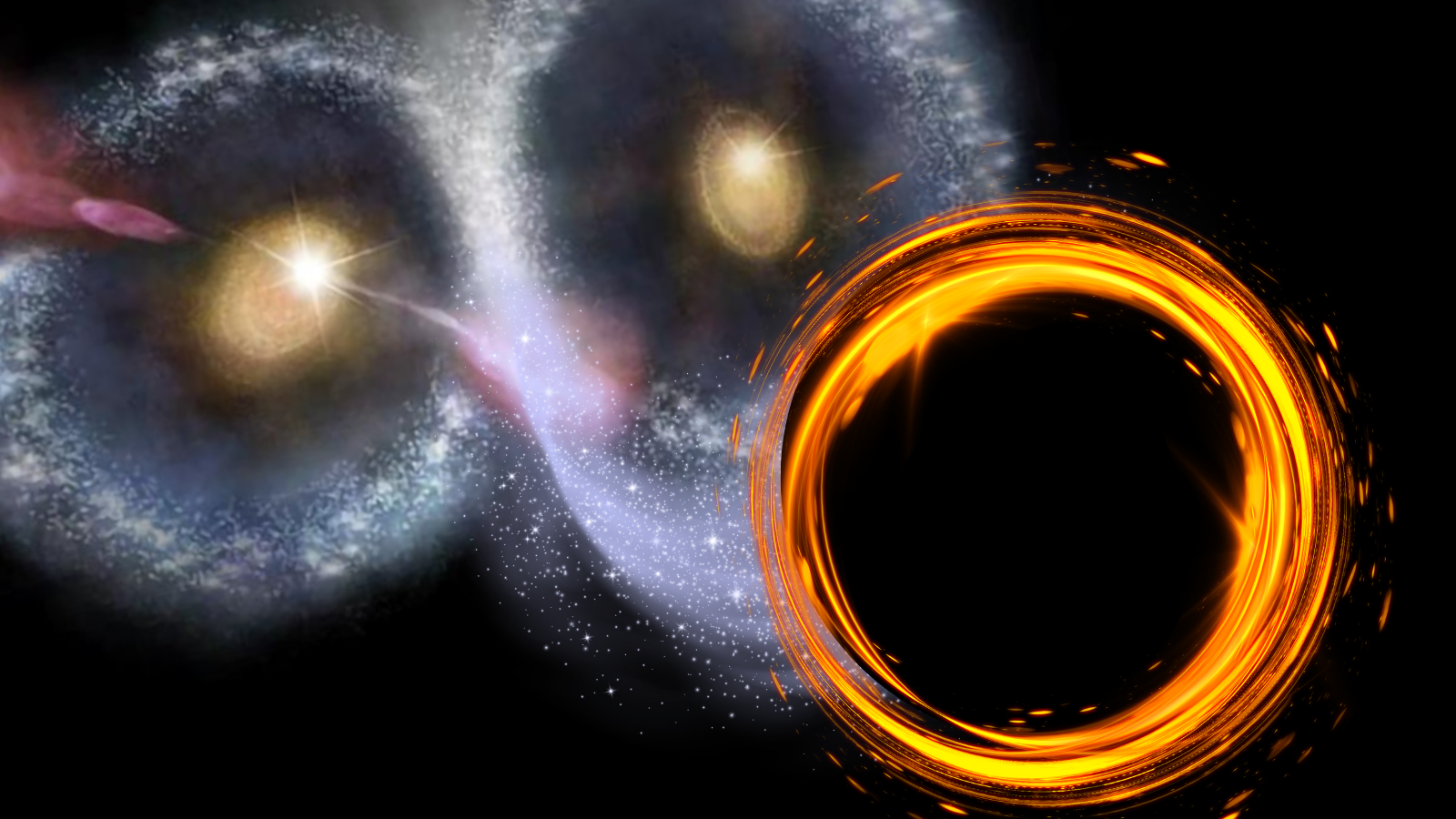NASA Tracks Three Space Bursts, Says Stellar Explosions Imminent
Updated at 2:54 p.m. ET
Three powerful bursts of energy from different regions of space could presage spectacular explosions of huge stars, astronomers just announced.
The eruptions are likely imminent.
Scientists around the world are scrambling to track the blasts, NASA officials said last night. There is no danger to Earth from the expected stellar explosions, called supernovas.
Yet never before have astronomers had such advance warning of the faraway explosions. In fact, they don't even know if their forecasts are right.
What is clear is that as the flashes develop into explosions -- or not -- knowledge of how stars die is likely to grow.
'Beautiful' bursts
Breaking space news, the latest updates on rocket launches, skywatching events and more!
A blast of X-rays was spotted Sept. 12, and another on Sept. 16. Each came from a different location in the sky and from galaxies far beyond our own. A more powerful eruption was detected Sept. 24 from yet another spot in the sky. This third flash, importantly, was on the verge between an X-ray eruption and a more energetic gamma-ray burst, which involves a more powerful form of radiation.
X-rays and gamma rays are types of light, just like less powerful visible light and lowly radio waves. All are part of the electromagnetic spectrum.
The three high-energy flashes were each discovered by NASA's orbiting High-Energy Transient Explorer (HETE- 2) observatory. There is no reason to suspect there's any connection between the three blasts.
"We think it's just a strange coincidence," George Ricker, of the Massachusetts Institute of Technology, said in a telephone interview today.
Telescopes around the world have since raced to track each event.
"Each burst has been beautiful," Ricker said. "Depending on how these evolve, they could support important theories about supernova[s] and gamma-ray bursts."
Ricker told SPACE.com the stars will likely go supernova 10 to 20 days after the initial bursts that were spotted.
The initial events have faded beyond the visibility of small professional telescopes and are now being monitored by some of the world's largest ground-based observatories. Backyard astronomers likely could not find the bursts, Ricker said.
Head-scratchers
Gamma-ray bursts are the most energetic events in the universe other than the Big Bang. They briefly outshine entire galaxies. Astronomers think each burst is related to the explosion of a very massive star that has used up its main fuel. Much material is blasted into space, and some falls back rapidly and collapses into a tiny sphere more dense than most folks can imagine, resulting in the formation of a black hole.
In some cases, however, the energy might be unleashed when two black holes collide.
But experts are not sure why some supernovas are accompanied by gamma-ray bursts and others seem to shoot out only X-rays (the latter assumption has not even been convincingly determined). The leading theory is that when a star collapses after exploding, it sends out two incredibly swift jets of material, one along each of its poles. If a jet is pointed toward Earth, the thinking goes, we see a gamma-ray burst. Otherwise we note only the X rays.
Other theorists argue that gamma-ray bursts and X-ray flashes are different animals altogether.
All this could become much clearer in coming days as the three new eruptions are monitored by a global telescope network designed to detect each of the different wavelengths of energy involved.
Nature on a rampage
The eruptions are all probably a billion or so light-year away, Ricker said. That's relatively close in comparison to most gamma-ray bursts, which may explain why the X-ray flashes have been seen at all.
"These past two weeks have been like 'cock, fire, reload,'" Ricker said. "Nature keeps on delivering."

Until recently, the events leading up to gamma-ray bursts and black hole formation had not been seen.
The bursts are known to come routinely from every direction in the sky. But they last just seconds, sometimes less than a second, so in most cases only the aftermath is witnessed. Astronomers hope this time they've seen the prelude and can witness the entire process.
Observations of other events in recent years linked gamma-ray bursts to supernovas. Now, follow-up observations of the Sept. 24 blast, named GRB040924, suggests X-rays and gamma rays do indeed emanate from the same event.
The recent bursts "may be the first time we see an X-ray flash lead to a supernova," said theorist Stanford Woosley of the University of California at Santa Cruz.
- Sky-High Technology: The History and Future of Telescopes
- Hubble Photo of a Dramatic Supernova
- Runaway Star Collisions Create Black Holes

Rob has been producing internet content since the mid-1990s. He was a writer, editor and Director of Site Operations at Space.com starting in 1999. He served as Managing Editor of LiveScience since its launch in 2004. He then oversaw news operations for the Space.com's then-parent company TechMediaNetwork's growing suite of technology, science and business news sites. Prior to joining the company, Rob was an editor at The Star-Ledger in New Jersey. He has a journalism degree from Humboldt State University in California, is an author and also writes for Medium.
